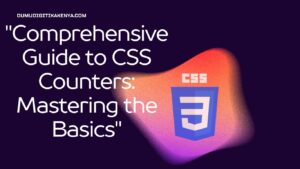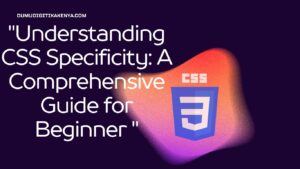Introduction To HTML Comments
HTML Comments provide a valuable way to add notes and explanations within your HTML code. They are not visible to website visitors but can be incredibly useful for you and your team when working on a project. In this tutorial, we will explore the basics of HTML Comments, how to use them, and their importance in web development in browsers.
Table of Contents

What Are HTML Comments?
HTML Comments are non-rendered lines of text within your HTML code that are used to provide explanations or notes about the code. These comments are ignored by web browsers and, as a result, do not appear on the web page itself. Instead, they serve as annotations for developers and can be incredibly helpful when you need to clarify or document your code.
How to Add HTML Comments
Adding HTML comments is simple. You can insert a comment by using the <!-- and --> tags to enclose the text you want to comment on. Here’s a basic example:
<!-- This is a comment. -->The text within the <!-- and --> tags will not be displayed on the webpage but will be visible when you view the page’s source code. This makes it an excellent tool for documenting your code or temporarily disabling a specific section without deleting it.
Why Use HTML Comments?
- Documentation: HTML Comments provide a way to document your code, making it easier for you and your team to understand the purpose and functionality of specific code segments.
- Debugging: Comments can be used to temporarily remove or “comment out” a piece of code to isolate issues when debugging. This prevents the need to delete code and lose valuable work.
- Collaboration: When working on projects with a team, comments help team members understand your code, even if they didn’t write it. This promotes collaboration and reduces confusion.
Examples of HTML Comments
Let’s dive into some practical examples of HTML comments and their usage:
1. Basic Comment
<!-- This is a basic HTML comment. -->This comment doesn’t affect the webpage but is visible in the source code, serving as a note.
2. Commenting Out Code
You can also use comments to temporarily disable a block of code without deleting it. This is incredibly helpful for debugging.
<!--
<h1>This is a heading</h1>
<p>This is a paragraph.</p>
-->In this example, the HTML tags within the comment block won’t be rendered on the webpage.
3. Commenting for Documentation
Comments can be used to document your code for better understanding. For instance, you can comment HTML sections to explain their purpose:
<!-- Header Section -->
<header>
<h1>Website Title</h1>
<nav>
<!-- Navigation Menu -->
<ul>
<li>Home</li>
<li>About</li>
<li>Contact</li>
</ul>
</nav>
</header>In this case, comments clarify the structure of the code and the purpose of specific elements.
Conclusion
In conclusion, understanding the significance of HTML Comments is pivotal for any aspiring web developer. These unobtrusive annotations within your code provide an invaluable means to enhance code readability, foster collaboration within development teams, and simplify the debugging process. By using the <!-- and --> tags effectively, you can create a well-documented codebase that not only facilitates your own understanding but also ensures that your projects remain scalable and maintainable in the long run. With HTML Comments as your ally, you’ll find yourself on a path to becoming a more proficient and organized web developer.
Incorporating HTML Comments into your coding practices can be a game-changer. These unrendered lines of text serve as an essential tool for the organization and documentation of your HTML code. Whether you need to clarify the purpose of specific code segments, temporarily disable code for debugging, or collaborate seamlessly within a development team, HTML Comments have got you covered. By mastering the art of adding comments to your HTML, you’re not only enhancing the functionality of your websites but also streamlining the development process and ensuring that your code remains comprehensible and adaptable.
In the fast-paced world of web development, HTML Comments may seem inconspicuous, but their impact on the quality of your code is undeniable. With a keen understanding of HTML Comments, you can elevate your web development skills, create cleaner and more maintainable code, and ultimately deliver better user experiences on your websites. So, as you embark on your coding journey, remember that HTML Comments are not just notes; they’re the secret to becoming a more proficient and SEO-friendly web developer.




